Historical characters and legendary personalities — what they really looked like
Categories: Celebrities | History
By Pictolic https://pictolic.com/article/historical-characters-and-legendary-personalities-what-they-really-looked-like.htmlThe reconstruction of the face from the skull, or the method of anthropological reconstruction of the appearance on a craniological basis, of famous (and not only) historical characters is a favorite occupation of anthropologists. Not so long ago, scientists presented their vision of Tutankhamun's appearance to the public. It is difficult to judge the degree to which the reconstruction results correspond to the true appearance of the heroes of the past. Sometimes even the reconstruction objects themselves are not what they were supposed to be. But it is always interesting to look at them. Let's get acquainted with the historical faces that have already sunk into oblivion, but look like living ones.

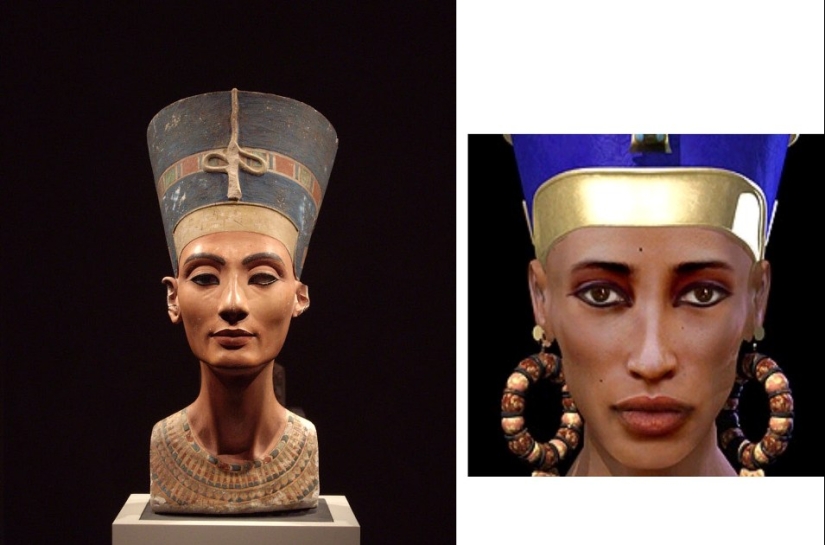
It is possible that this is what the famous Nefertiti — the mother of Pharaoh Tutankhamun-looked like.
In 2003, Egyptologist Joanne Fletcher identified the mummy KV35YL as Nefertiti — the "main consort" of the ancient Egyptian pharaoh of the XVIII dynasty Akhenaten. At the same time, its appearance was reconstructed. However, in 2010, as a result of a DNA study, it turned out that the remains did not belong to Nefertiti, but to another" second half " of Akhenaten, and also his sister. However, it may be that she was the wife of another Pharaoh — Smenkhkara. However, Egyptologists agree that the remains belong to Tutankhamun's mother.

British scientists using a virtual autopsy recreated the appearance of Tutankhamun-the pharaoh of the XVIII dynasty of the New Kingdom, who ruled Egypt in 1332-1323 BC.
Scientists believe that Tutankhamun suffered from genetic diseases, as well as malaria, which may have caused his early death: the pharaoh died at the age of 19. Half of the men living in Western Europe are descendants of Egyptian pharaohs and, in particular, relatives of Tutankhamun, according to scientists. The common ancestor of the ruler of ancient Egypt and European men with the haplogroup R1b1a2 lived in the Caucasus about 9,5 thousand years ago. The carriers of the "Pharaoh" haplogroup began to migrate to Europe about 7 thousand years ago.

The Apostle Paul is a major figure in world history, one of the authors of the New Testament and one of the founders of Christianity.
Saint Paul lived in 5-67 AD. Paul established numerous Christian communities in Asia Minor and the Balkan Peninsula. In 2009, for the first time in history, a scientific study of the sarcophagus located under the altar of the Roman temple of San Paolo Fuori le Mura was conducted. Bone fragments were found in the sarcophagus, which were examined using carbon-14 by experts who were not aware of their origin. According to the results, they belong to a person who lived between the first and second centuries. This confirms the indisputable tradition that we are talking about the remains of the Apostle Paul.

King Richard III, reconstructed from the remains discovered in the autumn of 2012 under a car park in Leicester.
Richard III-the last representative of the Plantagenet male line on the English throne, reigned from 1483 to 1485. It was recently revealed that Richard III died on the battlefield after dismounting and losing his helmet. Before his death, the English king received 11 wounds, with nine blows to the head. The absence of wounds on the bones of the hands suggests that at the time of death, the monarch was still in armor. Richard III was killed at the Battle of the Bosphorus, fighting the pretender to the throne — Henry Tudor (the future King Henry VII).
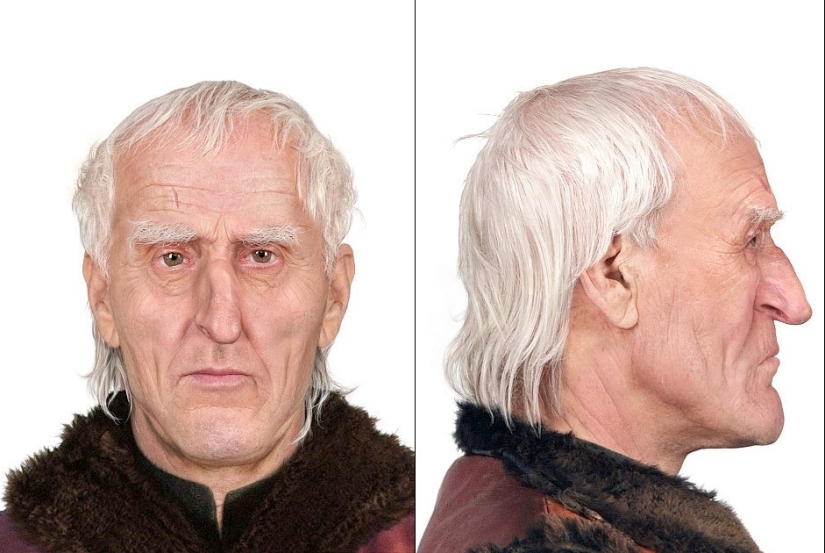
The remains of the creator of the medieval heliocentric picture of the world, Nicolaus Copernicus, were discovered in the cathedral of Frombork (modern Poland) in 2005. In Warsaw, a computer reconstruction of the face was performed in the Central Laboratory of Criminology.
In 2010, the International Union of Theoretical and Applied Chemistry assigned names, and in 2011 officially approved the designations of the elements: darmstadt, roentgenium and copernicus (or copernicus), with the numbers 110, 111 and 112, respectively. Initially, for the 112th element, Copernicium, named after Nicolaus Copernicus, the symbol Cp was proposed, then it was changed to Cn.

In 2008, Scottish anthropologist Caroline Wilkinson reconstructed the appearance of the great 18th-century German composer Johann Sebastian Bach.
Bach's remains were exhumed in 1894, and in 1908, sculptors first tried to recreate his appearance, guided, however, by the famous portraits of the composer. Critics of the early twentieth century were dissatisfied with this project: they argued that the bust could just as well depict, for example, Handel.
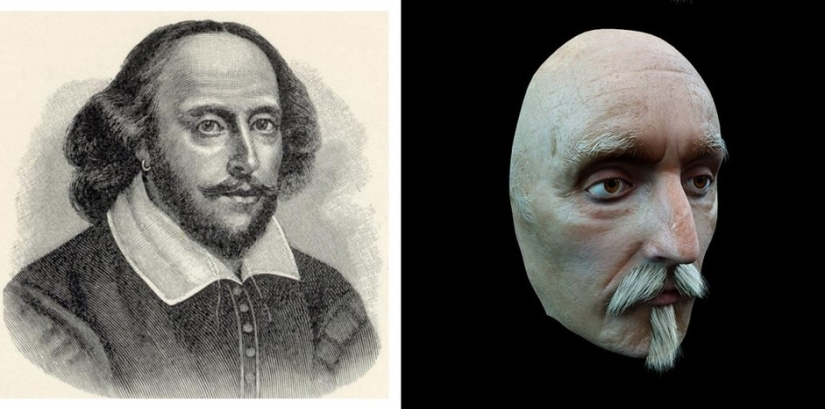
The reconstruction of the face of William Shakespeare is made from the death mask of the English poet and playwright.
The hypothesis of infinite monkeys, which sooner or later will print the artistic creation of William Shakespeare, was tested by the American programmer Jesse Anderson (Jesse Anderson). The monkey program managed to print Shakespeare's poem "A Lover's Complaint" in a month. However, an attempt to test the hypothesis on live monkeys failed. In 2003, a keyboard connected to a computer was placed in a cage with six macaques at Peyton Zoo (UK). The monkeys typed five pages of incoherent text and broke the keyboard a month later.
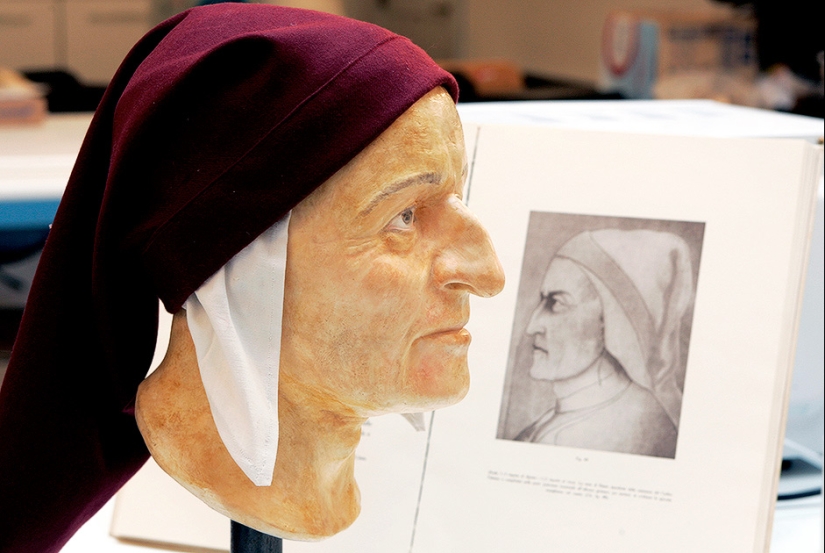
In 2007, Italian scientists from the University of Bologna reconstructed the appearance of the great Italian poet of the turn of the XIII and XIV centuries, Dante Alighieri.
Dante Alighieri, according to some scientists, could suffer from narcolepsy — a disease of the nervous system, accompanied by attacks of drowsiness and sudden falling asleep. These conclusions are based on the fact that in Dante's Divine Comedy, the symptoms of narcolepsy are reproduced with great accuracy, as well as the cataplexy that often accompanies it, that is, a sudden loss of muscle tone.
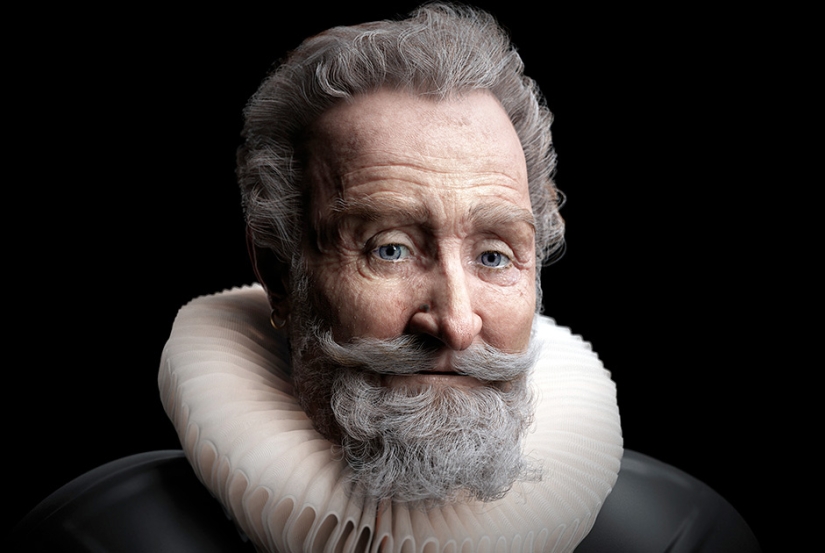
Perhaps this is what Henry IV of France, the Huguenot leader who was murdered by a Catholic fanatic in 1610, looked like.
In 2010, forensic experts led by Philippe Charlier (Philippe Charlier) found that the preserved mummified "head of Henry IV" is authentic. Based on it, in February 2013, the same scientists presented a reconstruction of the appearance of the king. However, in October 2013, another group of geneticists questioned the authenticity of the remains of the monarch of the Bourbon dynasty.
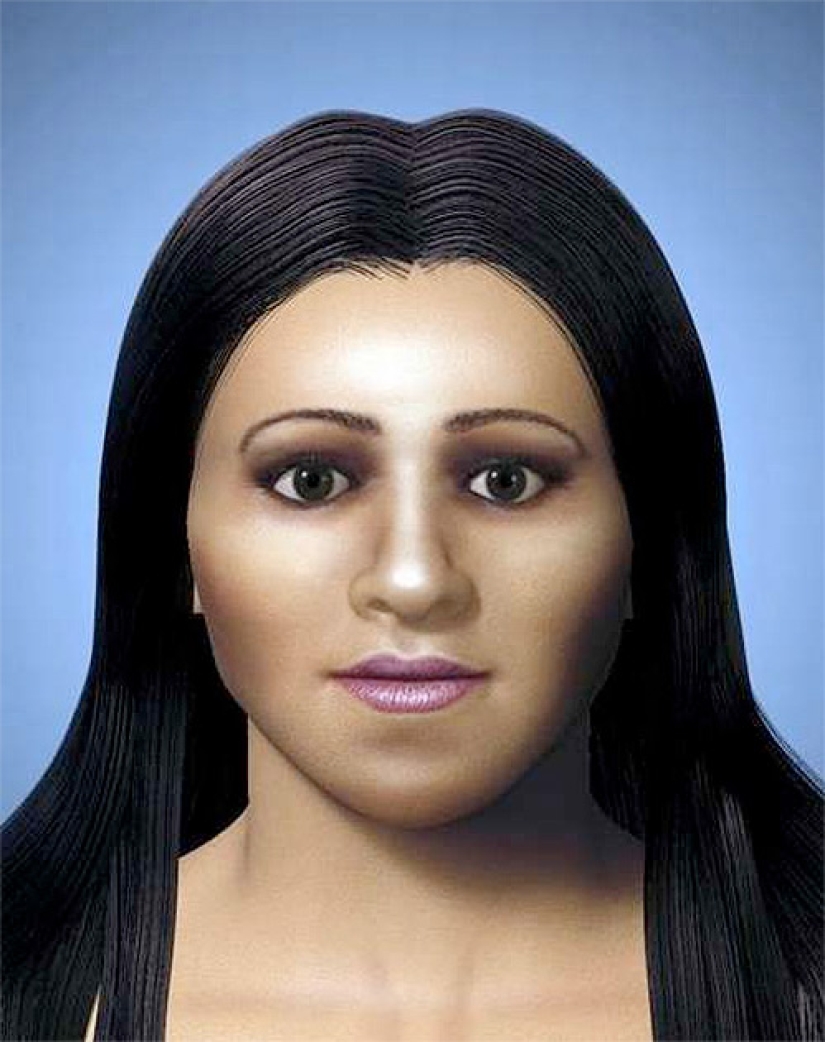
In 2009, the appearance of Arsinoe IV, the younger sister and victim of Queen Cleopatra, was reconstructed. Arsinoe's face is recreated from the measurements taken from her skull, which was lost during the Second World War.
Arsinoe died in 41 BC. According to the ancient Roman historian Josephus, she was executed at Ephesus on the orders of Mark Antony and Cleopatra, who saw her half-sister as a threat to her power.
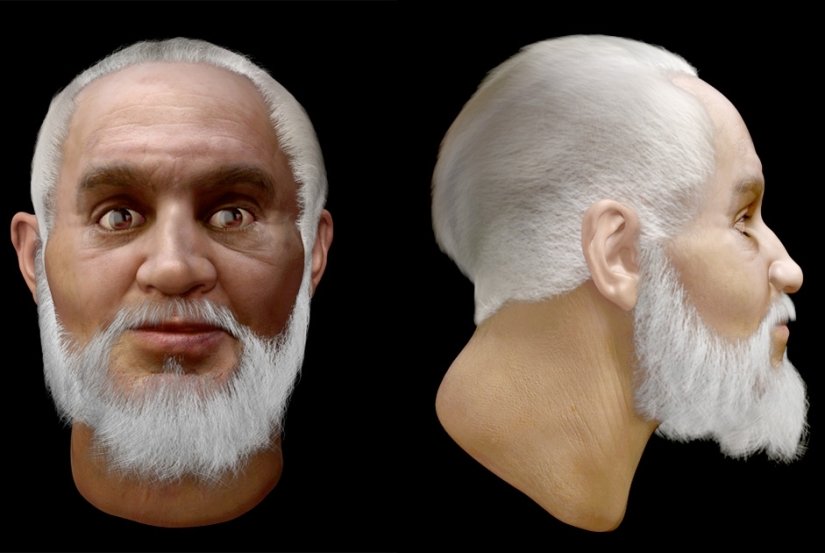
The exterior of St. Nicholas is reconstructed according to the data of an Italian professor of anatomy, obtained in the 1950s during the restoration of the Basilica of St. Nicholas in the city of Bari.
In Christianity, Nicholas of Myra is revered as a miracle worker and is considered the patron saint of sailors, merchants, and children.
Keywords: Reconstruction | History | Portrait | Celebrities | Archaeology | Anthropology | Face | Skull | Characters
Post News ArticleRecent articles

Leonardo da Vinci was accused of being fond of orgies. William the Conqueror, despite all his successes, was called a "Bastard" ...

Modesty? Decency? A sense of tact? No, you haven't heard! Just look at what the people from the selection below are doing! No ...
Related articles

A music album is not only a collection of tracks, but also an example of fine art. Each cover carries a certain meaning, and behind ...

In November 69 BC, she was born Cleopatra, the last Queen of Egypt from the Macedonian dynasty of the Ptolemies. Cleopatra, perhaps ...

A good sniper doesn't have to be a career soldier. This simple postulate was well understood by the Red Army soldiers who ...

American documentary photographer Bruce Davidson came to the UK in 1960 for a couple of months on the assignment of Queen magazine. ...